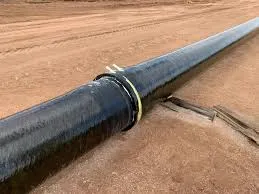
-
 Afrikaans
Afrikaans -
 Albanian
Albanian -
 Amharic
Amharic -
 Arabic
Arabic -
 Armenian
Armenian -
 Azerbaijani
Azerbaijani -
 Basque
Basque -
 Belarusian
Belarusian -
 Bengali
Bengali -
 Bosnian
Bosnian -
 Bulgarian
Bulgarian -
 Catalan
Catalan -
 Cebuano
Cebuano -
 China
China -
 China (Taiwan)
China (Taiwan) -
 Corsican
Corsican -
 Croatian
Croatian -
 Czech
Czech -
 Danish
Danish -
 Dutch
Dutch -
 English
English -
 Esperanto
Esperanto -
 Estonian
Estonian -
 Finnish
Finnish -
 French
French -
 Frisian
Frisian -
 Galician
Galician -
 Georgian
Georgian -
 German
German -
 Greek
Greek -
 Gujarati
Gujarati -
 Haitian Creole
Haitian Creole -
 hausa
hausa -
 hawaiian
hawaiian -
 Hebrew
Hebrew -
 Hindi
Hindi -
 Miao
Miao -
 Hungarian
Hungarian -
 Icelandic
Icelandic -
 igbo
igbo -
 Indonesian
Indonesian -
 irish
irish -
 Italian
Italian -
 Japanese
Japanese -
 Javanese
Javanese -
 Kannada
Kannada -
 kazakh
kazakh -
 Khmer
Khmer -
 Rwandese
Rwandese -
 Korean
Korean -
 Kurdish
Kurdish -
 Kyrgyz
Kyrgyz -
 Lao
Lao -
 Latin
Latin -
 Latvian
Latvian -
 Lithuanian
Lithuanian -
 Luxembourgish
Luxembourgish -
 Macedonian
Macedonian -
 Malgashi
Malgashi -
 Malay
Malay -
 Malayalam
Malayalam -
 Maltese
Maltese -
 Maori
Maori -
 Marathi
Marathi -
 Mongolian
Mongolian -
 Myanmar
Myanmar -
 Nepali
Nepali -
 Norwegian
Norwegian -
 Norwegian
Norwegian -
 Occitan
Occitan -
 Pashto
Pashto -
 Persian
Persian -
 Polish
Polish -
 Portuguese
Portuguese -
 Punjabi
Punjabi -
 Romanian
Romanian -
 Russian
Russian -
 Samoan
Samoan -
 Scottish Gaelic
Scottish Gaelic -
 Serbian
Serbian -
 Sesotho
Sesotho -
 Shona
Shona -
 Sindhi
Sindhi -
 Sinhala
Sinhala -
 Slovak
Slovak -
 Slovenian
Slovenian -
 Somali
Somali -
 Spanish
Spanish -
 Sundanese
Sundanese -
 Swahili
Swahili -
 Swedish
Swedish -
 Tagalog
Tagalog -
 Tajik
Tajik -
 Tamil
Tamil -
 Tatar
Tatar -
 Telugu
Telugu -
 Thai
Thai -
 Turkish
Turkish -
 Turkmen
Turkmen -
 Ukrainian
Ukrainian -
 Urdu
Urdu -
 Uighur
Uighur -
 Uzbek
Uzbek -
 Vietnamese
Vietnamese -
 Welsh
Welsh -
 Bantu
Bantu -
 Yiddish
Yiddish -
 Yoruba
Yoruba -
 Zulu
Zulu
Exploring the Benefits and Features of FRP Cars in Modern Automotive Design
The Rise of FRP Cars Revolutionizing the Automotive Industry
In the ever-evolving landscape of the automotive industry, the advent of Fiber Reinforced Plastics (FRP) is making significant waves. Known for their lightweight and high-strength characteristics, FRP materials are revolutionizing car manufacturing, design, and performance. As manufacturers strive to meet fuel efficiency standards and enhance vehicle performance, FRP cars are stepping into the limelight as a viable solution.
.
Moreover, the benefits of FRP extend beyond just weight. These materials are highly resistant to corrosion and weathering, which enhances the longevity of the vehicles produced. Unlike traditional materials which may degrade over time, FRP components can maintain their structural integrity even in harsh conditions. This durability translates to lower maintenance costs for consumers, making FRP cars a long-term investment.
frp car

Design flexibility is another significant advantage of using FRP in automotive production. The malleability of FRP allows designers to explore innovative shapes and forms that were previously difficult to achieve with metal or other materials. This has led to more aerodynamic designs, ultimately improving fuel efficiency and performance. Additionally, the customizability of FRP means that manufacturers can create bespoke solutions tailored to specific performance requirements and aesthetic preferences.
Despite these advantages, the widespread adoption of FRP in the automotive industry is not without challenges. The initial costs of FRP materials can be higher than traditional components, and the manufacturing processes may require significant adjustments. However, as technology improves and production methods become more streamlined, these challenges are gradually being addressed.
In conclusion, FRP materials are paving the way for the next generation of vehicles. With their lightweight, durable, and design-friendly characteristics, they represent a promising answer to the automotive industry's quest for efficiency, sustainability, and innovation. As consumer preferences shift towards greener transportation options, the rise of FRP cars is poised to reshape the market, offering exciting possibilities for both manufacturers and consumers alike. The future of automotive engineering may very well be woven from fibers, changing the way we think about vehicle design and functionality.
Latest news
-
Exploring the Benefits of Top Hammer Drifter Rods for Enhanced Drilling PerformanceNewsJun.10,2025
-
High-Precision Fiberglass Winding Machine for GRP/FRP Pipe Production – Reliable & Efficient SolutionsNewsJun.10,2025
-
FRP Pipes & Fittings for Shipbuilding - Corrosion-Resistant & LightweightNewsJun.09,2025
-
Premium FRP Flooring Solutions Durable & Slip-ResistantNewsJun.09,2025
-
Premium Fiberglass Rectangular Tanks Durable & Lightweight SolutionNewsJun.09,2025
-
Tapered Drill String Design Guide Durable Performance & UsesNewsJun.09,2025









